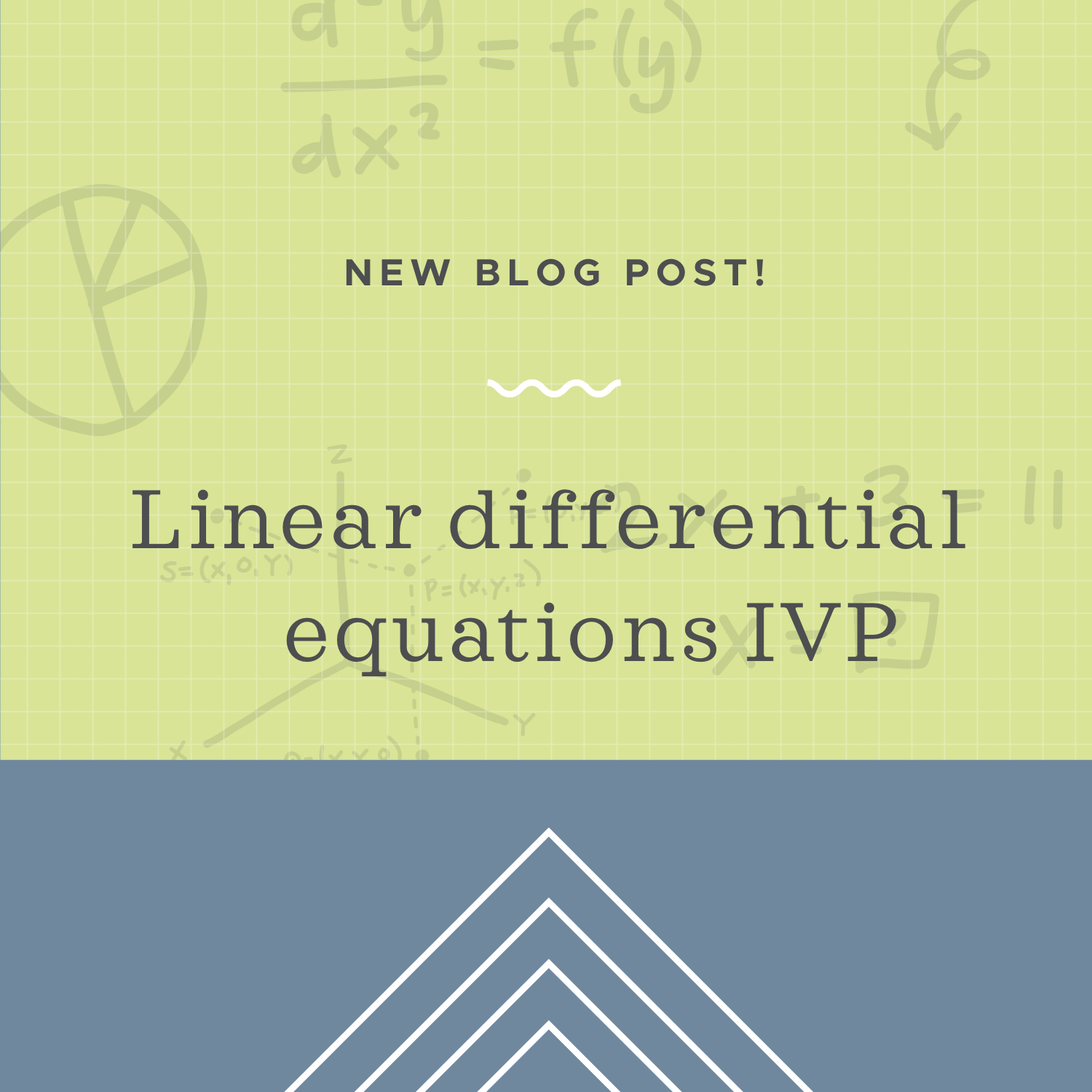How to solve linear differential equations initial value problems
The initial condition lets us find the particular solution
We already know how to find the general solution to a linear differential equation. But this solution includes the ambiguous constant of integration ???C???. If we want to find a specific value for ???C???, and therefore a specific solution to the linear differential equation, then we’ll need an initial condition, like
???f(0)=a???
Given this additional piece of information, we’ll be able to find a value for ???C??? and solve for the specific solution.
Hi! I'm krista.
I create online courses to help you rock your math class. Read more.
Solving linear differential equation initial value problems
Take the course
Want to learn more about Differential Equations? I have a step-by-step course for that. :)
How to solve the initial value problem step-by-step
Example
Solve the linear differential equation initial value problem if ???f(0)=\frac52???.
???\frac{dy}{dx}=-5y+3e^{x}???
To make sure that we have a linear differential equation, we need to match the equation we were given with the standard form of a linear differential equation.
???\frac{dy}{dx}=-5y+3e^{x}???
???\frac{dy}{dx}+5y=3e^{x}???
compared to
???\frac{dy}{dx}+P(x)y=Q(x)???
Now the linear differential equation is in standard form, and we can see that ???P(x)=5??? and ???Q(x)=3e^x???. With ???P(x)???, we can find the integrating factor ???\rho(x)???.
???\rho(x)=e^{\int{P(x)\ dx}}???
???\rho(x)=e^{\int{5\ dx}}???
???\rho(x)=e^{5x}???
Now we’ll have to multiply the integrating factor through both sides of our linear differential equation.
???\left(e^{5x}\right)\frac{dy}{dx}+\left(e^{5x}\right)5y=\left(e^{5x}\right)3e^{x}???
???\frac{dy}{dx}e^{5x}+5e^{5x}y=3e^{6x}???
To simplify the left-hand side further we need to remember the product rule for differentiation,
???\frac{d}{dx}\left[f(x)g(x)\right]=f'(x)g(x)+f(x)g'(x)???
If we say that
???f'(x)=\frac{dy}{dx}???
and
???g(x)=e^{5x}???
then
???f(x)=y???
and
???g'(x)=5e^{5x}???
Given this additional piece of information, we’ll be able to find a value for C and solve for the specific solution.
If we substitute all of that into the product rule formula, we get
???\frac{d}{dx}\left(ye^{5x}\right)=\frac{dy}{dx}e^{5x}+y5e^{5x}???
???\frac{d}{dx}\left(ye^{5x}\right)=\frac{dy}{dx}e^{5x}+5e^{5x}y???
What we see now is that the right side of this equation matches exactly the left side of our linear differential equation after we multiplied through by the integrating factor. Therefore, we can make a substitution and replace the left side of our linear differential equation with the left side of the product rule formula.
???\frac{d}{dx}\left(ye^{5x}\right)=3e^{6x}???
The goal of this initial value problem is to find an explicit equation for ???y???. In order to take the next step to solve for ???y???, we have to integrate both sides. Integrating the derivative ???d/dx??? will make both things cancel out.
???\int\frac{d}{dx}\left(ye^{5x}\right)\ dx=\int3e^{6x}\ dx???
???ye^{5x}=3\left(\frac16\right)e^{6x}+C???
???ye^{5x}=\frac12e^{6x}+C???
Dividing both sides by ???e^{5x}??? to solve for ???y???, we get
???y=\left(\frac12e^{6x}+C\right)\left(\frac{1}{e^{5x}}\right)???
???y=\left(\frac{e^{6x}}{2}+C\right)\left(\frac{1}{e^{5x}}\right)???
???y=\left(\frac{e^{6x}+2C}{2}\right)\left(\frac{1}{e^{5x}}\right)???
???y=\frac{e^{6x}+2C}{2e^{5x}}???
Since we’ve been given the initial condition
???f(0)=\frac52???
we can plug it into our equation for ???y??? to find a value for ???C???.
???\frac52=\frac{e^{6(0)}+2C}{2e^{5(0)}}???
???\frac52=\frac{1+2C}{2(1)}???
???5=1+2C???
???4=2C???
???2=C???
Plugging this value for ???C??? back into our equation for ???y???, we get the explicit solution.
???y=\frac{e^{6x}+2(2)}{2e^{5x}}???
???y=\frac{e^{6x}+4}{2e^{5x}}???






